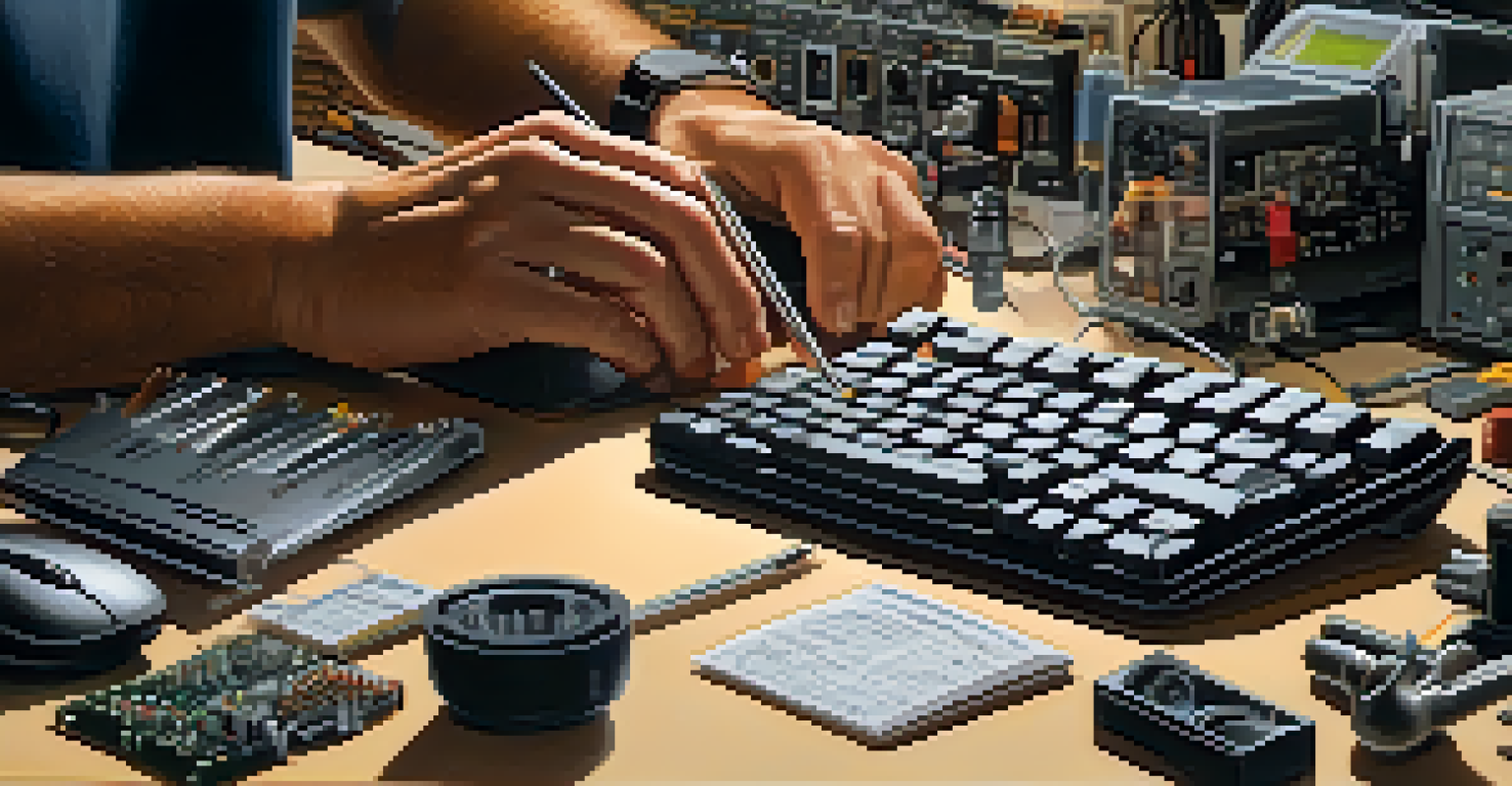The Role of Regular Upgrades in Preventing Major Repairs

Understanding the Cost of Major Repairs
Major repairs can be a significant financial burden. They often arise from neglecting regular maintenance and upgrades, leading to equipment failure or system breakdowns. For instance, replacing an entire HVAC system can cost thousands, while regular upkeep is much more manageable.
An ounce of prevention is worth a pound of cure.
When you think about the cost-benefit analysis, it often makes more sense to invest in small, regular upgrades rather than face a large, unplanned expense. This concept can apply to everything from home appliances to software systems. Cumulatively, these upgrades keep everything running smoothly.
By understanding how major repairs can disrupt your budget, you can see the value in proactive maintenance. It’s about protecting your investment and ensuring longevity, which ultimately enhances your quality of life.
The Benefits of Regular Upgrades
Regular upgrades can significantly enhance the performance and efficiency of your systems. For example, updating your software regularly can lead to improved functionality and security, safeguarding your data from potential breaches. This proactive approach not only keeps your systems running smoothly but also provides peace of mind.

Moreover, frequent upgrades help you stay current with the latest technology trends. This can lead to increased productivity, as newer systems often come with features designed to streamline processes. Think of it as trading in an old car for a newer model that not only looks better but also runs more efficiently.
Invest in Regular Upgrades
Regular upgrades are essential to prevent costly major repairs and maintain system efficiency.
Ultimately, these upgrades can improve user satisfaction and operational effectiveness. The result is a more pleasant experience for everyone involved, whether it's employees using updated tools or customers benefiting from enhanced services.
Identifying When Upgrades Are Needed
To prevent major repairs, it’s crucial to identify when upgrades are necessary. Regularly assessing the performance of your systems can help you catch early signs of wear and tear. For example, if your computer is running slowly or your appliances are making unusual noises, these could be indicators that an upgrade is needed.
The key to success is to start before you are ready.
Keeping an eye on technological advancements in your industry can also guide your upgrade decisions. If competitors are leveraging new tools that enhance their services, it may be time to follow suit. This awareness helps you stay competitive and avoid falling behind.
Establishing a routine check-up schedule can make identifying the need for upgrades easier. Just like you would take your car for regular maintenance, your systems deserve the same attention to ensure they’re performing optimally.
Creating a Budget for Regular Upgrades
Budgeting for regular upgrades is essential to avoid financial strain during major repairs. Consider setting aside a portion of your budget specifically for upgrades each year. This proactive financial planning can help ensure you have funds available for necessary improvements without resorting to emergency funds.
You might also want to prioritize upgrades based on their potential impact. For instance, if a software update significantly enhances security features, it may take precedence over a less critical upgrade. This strategic budgeting allows you to make informed decisions about where to allocate your resources.
Budget for Upgrades Proactively
Setting aside a budget for upgrades helps avoid financial strain and ensures timely improvements.
Remember, small investments over time can lead to more significant savings in the long run. By adopting this approach, you can ensure that your systems remain up-to-date and minimize the risk of costly repairs.
The Role of Technology in Upgrades
Technology plays a pivotal role in facilitating regular upgrades. Many systems today come with automated update features that can streamline the process, ensuring you never miss an important upgrade. For example, most software applications now send notifications when a new version is available, making it easy to stay current.
Additionally, cloud technology offers an efficient way to manage upgrades. With cloud-based systems, updates can occur seamlessly without disrupting your operations. This means you can benefit from the latest features without having to schedule extensive downtime.
Leveraging technology not only makes the upgrade process easier but also enhances the overall efficiency of your systems. As technology continues to advance, staying current becomes even more crucial to maintaining a competitive edge.
Training Staff for Effective Upgrades
Training staff on the importance of regular upgrades can make a significant difference. When employees understand how upgrades enhance their work tools, they are more likely to embrace new systems and practices. This creates a culture of continuous improvement within your organization.
Regular training sessions can also help staff become familiar with new features as they are implemented. This can prevent resistance to change and increase overall productivity. For instance, if a new software tool is rolled out, proper training ensures everyone knows how to use it effectively.
Embrace Technology for Efficiency
Utilizing technology for automated updates simplifies the upgrade process and enhances operational performance.
Investing time in training not only benefits your staff but also enhances the overall performance of your organization. When everyone is on board with upgrades, your systems can function at their best, preventing the need for major repairs down the line.
The Long-Term Impact of Regular Upgrades
The long-term impact of regular upgrades cannot be overstated. By consistently investing in upgrades, you can extend the lifespan of your systems and assets. For instance, regular maintenance on a vehicle can prevent major breakdowns, keeping it running smoothly for years.
In addition to extending lifespan, regular upgrades can improve overall efficiency. This means you can achieve more with less effort, ultimately leading to cost savings. Think of it like upgrading to energy-efficient appliances; while the initial cost may be higher, the savings on utility bills over time can be substantial.

Ultimately, the goal of regular upgrades is to create a sustainable system that minimizes risks and maximizes performance. By adopting this forward-thinking approach, you can ensure that your investments continue to pay off long into the future.